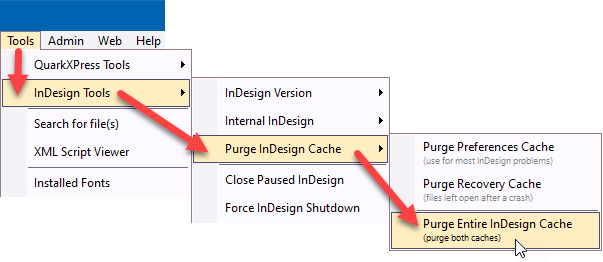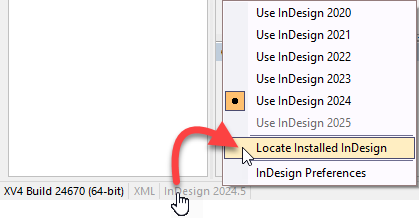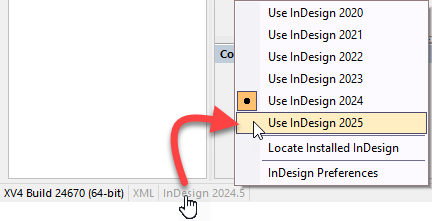The top part of the Tools menu, of the main window, consists of the following InDesign-related tools.
•Purge InDesign Cache and Preferences
•Locating Installed InDesign Versions
Use this menu item to launch the internal copy of InDesign. This feature is rarely used, except at the suggestion of technical support. |
|
When InDesign starts to behave strangely, the number one suggestion for troubleshooting is to replace (or trash or purge) the application preferences cache. This will remove corrupt preferences and replace them with a new set of default preferences, and often end bad behavior.
➢The Purge InDesign Cache function solves InDesign problems in 95% of cases and, even when it is not the solution, it does no harm.
Use the menu sequence below to have Q++Studio automatically purge the InDesign preferences cache on your workstation.  For more details about rebuilding InDesign preferences, see the CreativePro online article Rebuilding InDesign Preferences.
The difference between QuarkXPress and InDesign Preferences
The QuarkXPress preferences exist in both the external and internal locations, and therefore can be purged independently. However, all InDesign preferences are located in the same folder, and therefore are shared by the external and internal version of InDesign.
So the Purge InDesign Cache menu only has one sub-item related to preferences, as shown in the image above, and purging InDesign preferences applies to both the external and internal version of InDesign.
Manually purging InDesign preferences
To purge the external InDesign the preferences cache manually, close and relaunch InDesign, and IMMEDIATELY hold down Ctrl + Alt + Shift (Windows) or Cmd + Ctrl + Opt + Shift (Mac), and respond in the affirmative to the dialog asking if you really want to replace the preferences.
The InDesign Recovery Cache
The InDesign recovery cache is similar to QuarkXPress' rescue folder, in that it contains files that were loaded in InDesign, whenever InDesign crashed or was closed forcibly.
The main difference is that, every time InDesign is launched, it tries to open all the files located in the recovery cache. So, if the files in the cache were the cause of the crash, you can easily get into an endless loop.
|
|
Use the Update internal InDesign menu item, from the InDesign tools sub-menu, to empty-out the installation folder of the internal copy of InDesign, replacing its contents by those of the external InDesign (the installed copy that you use manually to open and modify InDesign documents).
This procedure is required in the following circumstances:
•After you have updated your InDesign (for example, from version 2026.0 to 2026.1). •Anytime you install or update a 3rd-party plug-in used in InDesign, such as a font "suitcase". |
|
Use this menu item to forcibly close the internal copy of InDesign. |
Locating Installed InDesign Versions

➢To locate installed versions of InDesign, click on the part of the status bar which displays the InDesign version currently used, as shown in the image on the right.
This procedure is required after you have installed a new version of InDesign and want to use it with Q++Studio.

➢This feature can be launched, most conveniently, by clicking on the part of the status bar which displays the InDesign version currently used, as shown in the image on the right.
See also: QuarkXPress appendices, InDesign appendices, QuarkXPress tools, and other tools.
Topic 183230, last updated on 16-Sep-2025